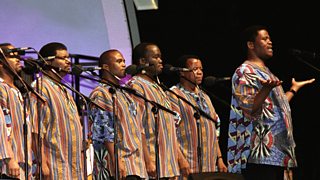

Sonority has the 15 different voices in 10 different languages.

Copy-paste your script and voice-over generated. At $10 price per music-track, thats $2,500 profit every month. Even if they send you 0.5% of that traffic, that’s 250 sales.
#SONORITY MUSIC TYPES HOW TO#
How to profit from Sonority: Upload and sell your music-tracks on stock music websites like AudioJungle and Pond5, who are generating about 5 million visitors monthly. How to profit from Sonority: Charge $10 for 60 seconds of voice-overs or $20 for 60 seconds of music-track and you could easily be making $4000 to $5000 a month, copy-pasting text and clicking a few buttons. Tim made over $9.360, Eric made over $100,000 and so did Greg Johnson. Susan from America made over $8,560 selling voice-overs. Andy Grey sold 6,138 copies of his music-track online. Niki sold 3643 copies of his music online, earning over $36,000. Ordinary people like Elliot Middleton, who made $40,000 selling music-tracks online. Use Sonority to create videos, courses, commercials, ads, presentations, training videos, webinars, video sales letters, social media videos, podcasts and more. Start your own Music-Agency or Audio-Agency. Mix-n-Merge multiple voice-overs and music tracks into one long audio track to use for your videos or your clients videos. No more robotic sounding amazon polly or wavenet text-to-speech.Ĭreate AI generated synthetic music for your videos background from multiple different genre, mood, style and time length. Manobos do not mix one category of sound with another one (e.g., jaw harp with flute or song with dance-rhythm instruments) because ideas about musics’ sonorities are linked to the musics’ inherent performance contexts and meanings.Create Human-Sounding Voice-Overs using artificial intelligence. Each instrumental music has specific connotations that do not exist apart from the normative performative context in which each instrumental music is articulated. Thus, the three types of instrumental music point to the fact that Manobos never experience nor contemplate music in the abstract. Most are mimetic secular dances and these, along with those danced by the medium in the ritual proper, are identified as having either “hard” or “soft” qualities, metaphors for the aesthesis or sensations of bodily gestures, particularly referencing the depiction of the transformation of spirit’s potential hostility in the beginning of ritual to agreeable hospitality in the second part when food is communally eaten. In rituals, particularly during the break when everyone waits for the cooking of the ritual food, participants take turns in dancing accompanied by the paired drum and gong. Dance-rhythms invoke and evoke the sensation of joy and pleasure in the dancers. This contrasts with the third type of instrumental music sonority which articulates many dance-rhythms ( lisag) (i.e., jaw harp, bamboo struck parallel zither takumboq, and the paired drum-and-gong or gimbæ and agung). The repertoire of this group of instrumental music sonority is very small and most are simulations of animal and insect sounds. In the second are instrumental music that is characterized by continuous drone-like sound (e.g., lip-valley flute pendag and, overlapping with the first category, the bowed lute). In the first group are instruments-jaw harp ( kubing), ring flute ( saguysuy), and bowed one-stringed lute ( kogot)-that can simulate speech. Instrumental music can be categorized into three groups based on the sonority of the music and therefore not exclusive to instruments per se. Yet despite this, it still imperative for us to understand Manobo instrumental music in terms of local knowledge. The lack of inherent ginhawa in Manobo instrumental music seems to be the reason why Manobos have not been very musically creative in it. This is called the ginhawaof a human being. Humans and other living beings have voices because they posses the vital principle of life.

When asked if they could understand the language ( ikagehenen) and messages ( kalitukan) of animals, say birds or monkeys, Agusan Manobos readily agree that they could not, obviously describing the uniqueness of this vocal faculty-speech-to human community. As such, Agusan Manobos categorically differentiate animate sounds from inanimate ones, e.g., those produced, intentionally or not, by lifeless objects like tin can, bamboo, plastic ware, metal, wood, and stone-including the electronically amplified sounds of the radio. Voice ( yageng or tingeg) among the Agusan Manobos is phenomenal sound heard from and produced by living beings in the world.


 0 kommentar(er)
0 kommentar(er)
